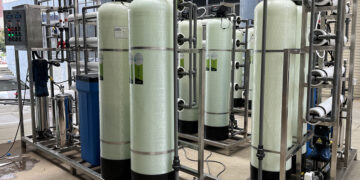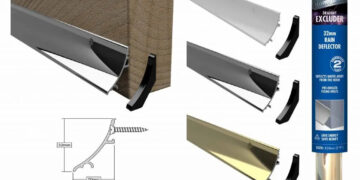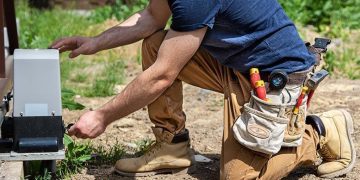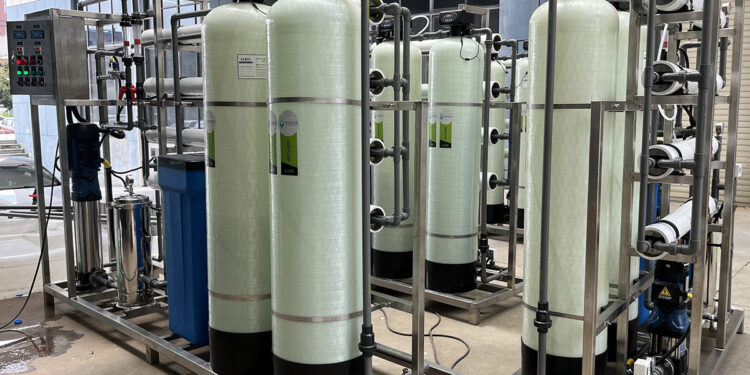Access to safe drinking water is a fundamental need for every household, business, and community. In many regions, especially in rural or remote areas, boreholes are a primary source of water. Boreholes tap into underground water supplies, offering a reliable and cost-effective solution for drinking water. However, untreated borehole water can contain harmful contaminants that pose serious health risks. This is where Borehole Water Treatment comes into play, ensuring that water extracted from underground sources is purified and safe for consumption.
The Importance of Clean Drinking Water
Drinking clean water is essential for maintaining good health. Contaminants in water, such as bacteria, viruses, heavy metals, and other pollutants, can lead to a variety of waterborne diseases. These include gastrointestinal illnesses, skin infections, and even more severe diseases like cholera or typhoid. In many areas, borehole water is used as a primary source of drinking water, but this water may be contaminated due to various factors such as pollution, the presence of minerals, or inadequate sanitation practices.
What is Borehole Water Treatment?
Borehole Water Treatment is a series of processes designed to remove impurities and contaminants from water drawn from underground sources. This treatment typically involves a combination of physical, chemical, and biological processes that work together to improve the quality of the water, making it safe for drinking. The treatment process can vary depending on the nature of the water source and the types of contaminants present.
Key Components of Borehole Water Treatment
Several treatment methods are used to ensure that borehole water meets the safety standards for drinking. These include:
Filtration: The first step in the treatment process often involves the use of filters to remove large particles and sediments from the water. This helps eliminate dirt, sand, and other visible impurities that can affect water clarity and taste.
Sedimentation: Sedimentation is a process where heavier particles settle at the bottom of the water tank, leaving cleaner water at the top. This helps remove contaminants like clay, silt, and other debris that can clog filters and affect water quality.
Chemical Treatment: Chemical treatments, such as the addition of chlorine or ozone, are used to kill harmful bacteria, viruses, and other microorganisms that may be present in the water. This process is crucial in ensuring that the water is microbiologically safe for consumption.
Ion Exchange: Ion exchange technology is used to remove dissolved minerals such as calcium, magnesium, and iron that can cause hard water. This process helps improve the taste and quality of the water, as well as reduce the risk of scale buildup in pipes and appliances.
Reverse Osmosis: Reverse osmosis is a highly effective method for purifying water by forcing it through a semi-permeable membrane. This process removes a wide range of contaminants, including salts, heavy metals, and other dissolved impurities, ensuring that the water is pure and safe to drink.
UV Disinfection: Ultraviolet (UV) light is used to disinfect water by destroying the DNA of harmful microorganisms. UV disinfection is a chemical-free method that ensures the elimination of pathogens, making it an eco-friendly and effective option for purifying borehole water.
Benefits of Borehole Water Treatment
Improved Water Quality: The primary benefit of Borehole Water Treatment is that it improves the quality of the water. By removing harmful contaminants and pathogens, treated borehole water becomes safe for drinking, cooking, and other daily activities.
Health and Safety: The treatment ensures that water is free from harmful microorganisms, reducing the risk of waterborne diseases. Safe drinking water is vital for the health and well-being of individuals and communities, particularly in areas where clean water is scarce.
Better Taste and Odor: Untreated borehole water can sometimes have an unpleasant taste or odor due to the presence of minerals or bacteria. The treatment process removes these impurities, leaving the water fresh, clean, and more palatable.
Protecting Infrastructure: Borehole water can sometimes contain high levels of minerals like calcium and iron, which can cause scaling and damage to plumbing systems and appliances. Treatment processes such as ion exchange and reverse osmosis help prevent these issues, extending the life of water infrastructure.
Cost-Effectiveness: While the initial investment in Borehole Water Treatment equipment may seem high, the long-term savings are significant. By ensuring that the water is safe and clean, the need for purchasing bottled water is reduced, and the overall costs associated with waterborne diseases are minimized.
The Need for Professional Borehole Water Treatment Solutions
Treating borehole water requires specialized knowledge and equipment to ensure that the process is effective and the water is safe for consumption. It is essential to rely on professional services that understand the complexities of water treatment and can tailor solutions to meet specific needs. Investing in high-quality Borehole Water Treatment systems will provide long-term benefits, ensuring a consistent supply of clean water.
Conclusion
Borehole Water Treatment is a crucial step in ensuring that water extracted from underground sources is safe for drinking and daily use. By effectively removing contaminants and pathogens, treatment systems protect the health and well-being of individuals and communities. Whether it is through filtration, chemical treatment, or advanced methods like reverse osmosis, the goal is the same – to provide clean, safe, and reliable water. Investing in proper water treatment is essential for maintaining a sustainable and healthy water supply.
For comprehensive and advanced solutions in water treatment, trust Biozone Manufacturing to provide effective, eco-friendly systems designed to meet your water purification needs. Visit Biozone Manufacturing for more information.
















































